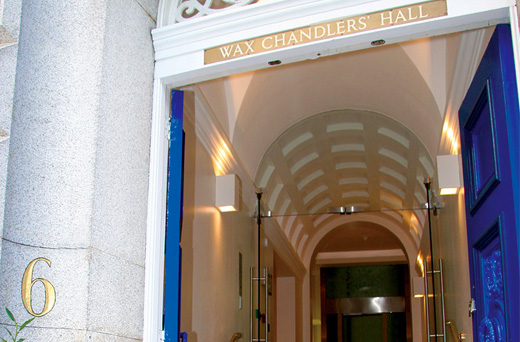Some of the halls around the time of the Reformation appeared to have been the mansions of wealthy citizens, which had been bequeathed to their companies. Many halls have suffered or disappeared through disasters such as the Great Fire of 1666 or the World Wars, while some were let for other uses or sold in times of financial hardship. Many have been rebuilt, but most companies without halls now use other company halls or similar premises.
Wax Chandlers’ Hall is home to the Firefighters’ Livery Company
Original functions of a hall:
- A meeting place for the Court – quite literally a trade court
- Administrative centre for the Company
- Charity administration
- Estate administration
- Examination centre
- A place where members could assemble
- A venue for feasts (link to level 3 or to bottom of page)
- A home for the Company’s officers
Other early characteristics of a Hall:
- Storehouses for grain against famine
- Armouries – weapons for the defence of the City
- Storage of pageant kit
- Almshouses
- A base for quality control – “Hall Marking”
- Hire to other Livery Companies and guilds who did not have halls
- Chapels
- A trade clearing house
Feasts:
- Tradition of feasts goes back to Anglo-Saxon times
- Emulation of the great households
- Entertainment of distinguished guests
- Ceremonials of friendship – eg. The Loving Cup
“the Waxchandler fest for ther was good chere”
(Henry Machyn’s diary for 17 August 1562)


